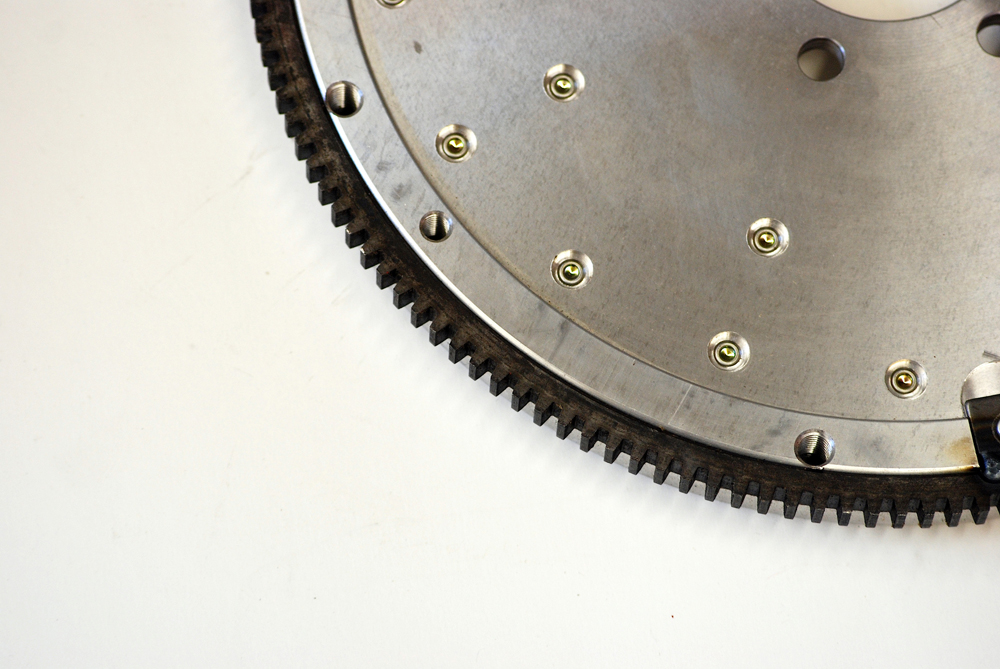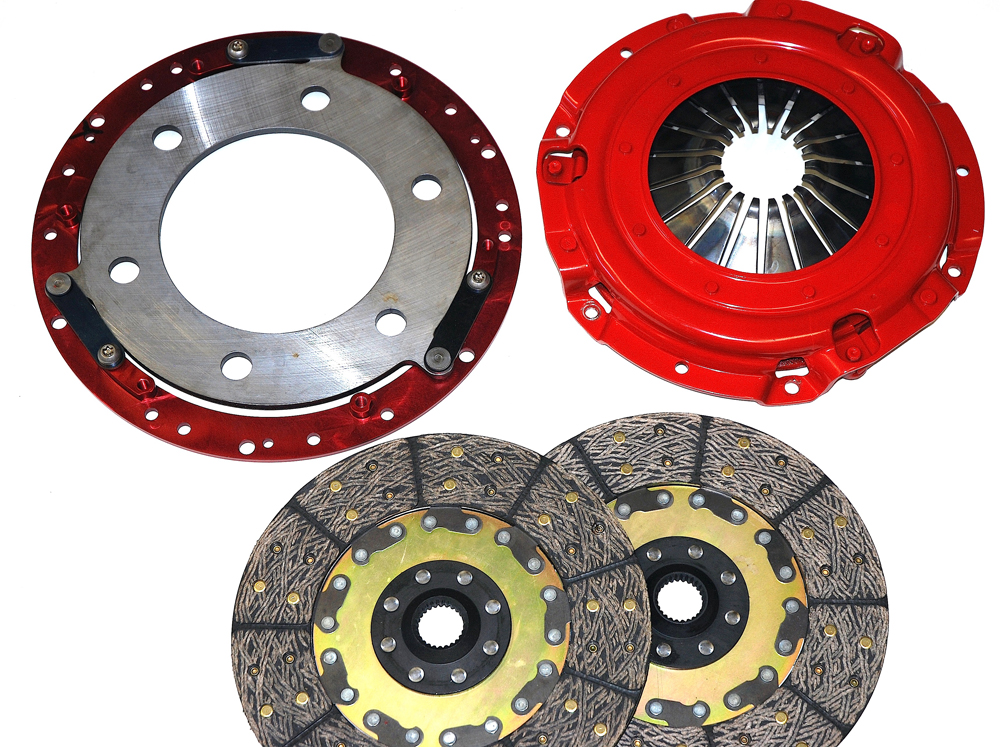
To read the earlier parts of this series, go HERE:
Part I
Part II
Part III
In the third part of this series, we began our look at modern dual disc high performance clutch assemblies. If you recall, we started our examination of McLeod’s small diameter RST clutch package. In this part, we’ll conclude the series. There’s something applicable here for just about any racer (at least those with three pedals on the floor).
McLeod Racing’s RST package effectively reduces the package diameter and at the same time, lowers the overall mass. So now, instead of using a large, relatively heavy 11.00-inch or larger Borg & Beck or Long style pressure plate, a small, light 9-11/16-inch Diaphragm pressure plate can be used. Instead of using a big 11.00-inch or larger clutch disc, the system makes use of two small, lightweight 9-11/16-inch organic discs. Obviously, the pair of discs increases the clamping power of the clutch (nearly doubling it over a standard single disc system). Because the clamping power has increased almost exponentially, then the demands placed upon the pressure plate springs are lowered. Just as importantly, the reduction in the clutch moment of inertia allows the use of a very lightweight pressure plate spring(s). That means your left leg is much happier – actually close to the same pressure as you’ll find in a modern FWD econo-box.
Mcleod’s testing has show that the RST can handle up to 800 horsepower. The RXT is the same clutch kit but with upgraded Miba puck configuration discs (a “Miba” puck consists of a bronze segmented disc facing), capable of containing 1,000 horsepower. There are some options too: With the RS series of clutch packages, you can also specify an RST II (or RXT II) model. The “II” means the solid hub is replaced with a sprung hub. This setup is available in applications where there is sufficient space available in the bellhousing. Another option is the “Plus” series, available on RST, RXT, RST II and RXT II models. With this option, the clutch package includes a dedicated flywheel. Because of the developments, it’s easy to see that something like the RST series (along with the variants) just might be the ticket in a dual-purpose street machine.
In the end, if you’re a “three pedal” stick shift guy (or gal) you can name your poison! It’s great to have good clutch choices.










Leave a Reply